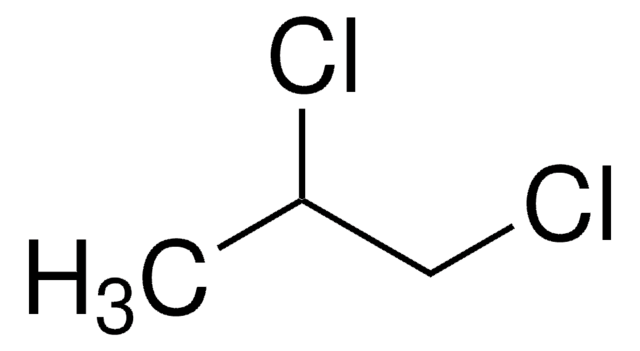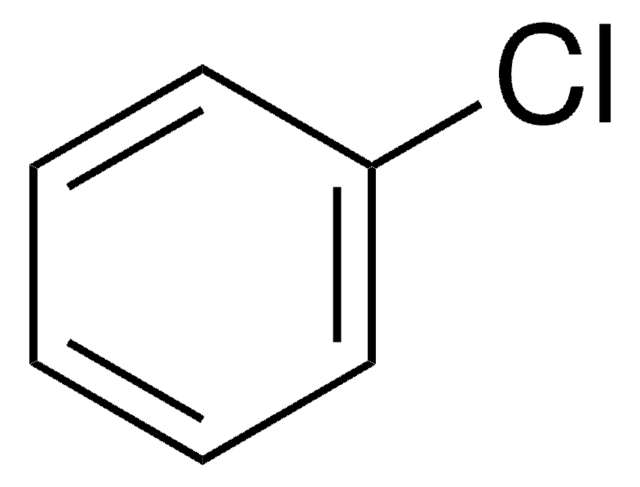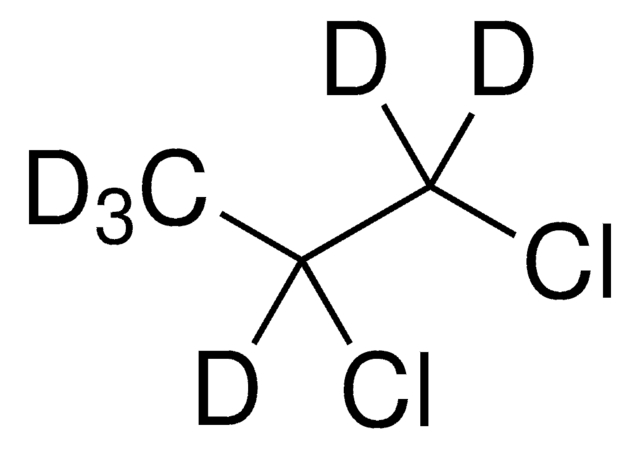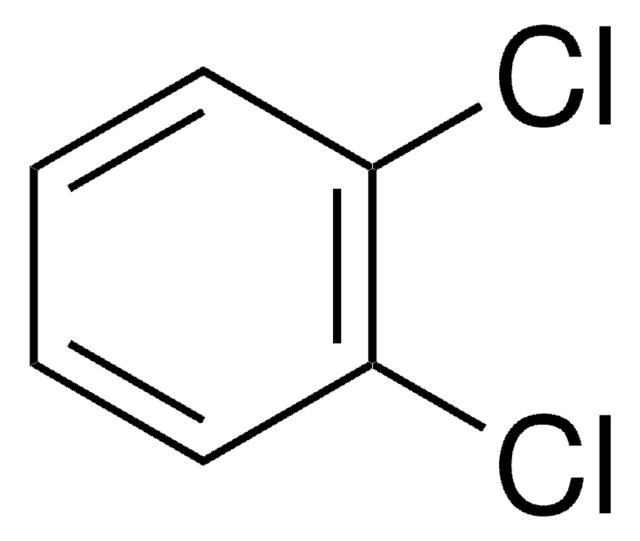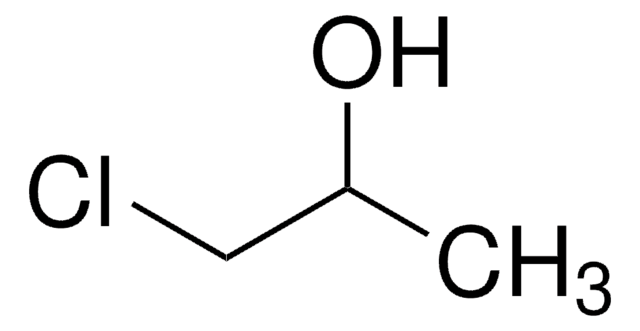02577
1,2-Dichloropropane
analytical standard
Sinonimo/i:
Propylene dichloride
About This Item
Prodotti consigliati
Grado
analytical standard
Livello qualitativo
Densità del vapore
3.89 (vs air)
Tensione di vapore
40 mmHg ( 19.4 °C)
Saggio
≥99.5% (GC)
Temp. autoaccensione
1035 °F
Durata
limited shelf life, expiry date on the label
Limite di esplosione
14.5 %
tecniche
HPLC: suitable
gas chromatography (GC): suitable
Indice di rifrazione
n20/D 1.439 (lit.)
n20/D 1.439
P. ebollizione
95-96 °C (lit.)
Punto di fusione
−100 °C (lit.)
Densità
1.156 g/mL at 25 °C (lit.)
applicazioni
agriculture
environmental
Formato
neat
Stringa SMILE
CC(Cl)CCl
InChI
1S/C3H6Cl2/c1-3(5)2-4/h3H,2H2,1H3
KNKRKFALVUDBJE-UHFFFAOYSA-N
Cerchi prodotti simili? Visita Guida al confronto tra prodotti
Descrizione generale
Applicazioni
Avvertenze
Danger
Indicazioni di pericolo
Consigli di prudenza
Classi di pericolo
Acute Tox. 3 Inhalation - Acute Tox. 4 Oral - Carc. 1B - Flam. Liq. 2
Codice della classe di stoccaggio
3 - Flammable liquids
Classe di pericolosità dell'acqua (WGK)
WGK 3
Punto d’infiammabilità (°F)
59.0 °F - closed cup
Punto d’infiammabilità (°C)
15.0 °C - closed cup
Dispositivi di protezione individuale
Eyeshields, Faceshields, Gloves, type ABEK (EN14387) respirator filter
Scegli una delle versioni più recenti:
Certificati d'analisi (COA)
Non trovi la versione di tuo interesse?
Se hai bisogno di una versione specifica, puoi cercare il certificato tramite il numero di lotto.
Possiedi già questo prodotto?
I documenti relativi ai prodotti acquistati recentemente sono disponibili nell’Archivio dei documenti.
I clienti hanno visto anche
Protocolli
US EPA Method TO-17: GC Analysis of Volatiles on VOCOL® after Collection/Desorption using Air Toxics Tube
US EPA Method 8260: GC Analysis of Volatiles on SPB®-624 after Purge & Trap using "K" Trap, Fast GC Analysis
Il team dei nostri ricercatori vanta grande esperienza in tutte le aree della ricerca quali Life Science, scienza dei materiali, sintesi chimica, cromatografia, discipline analitiche, ecc..
Contatta l'Assistenza Tecnica.